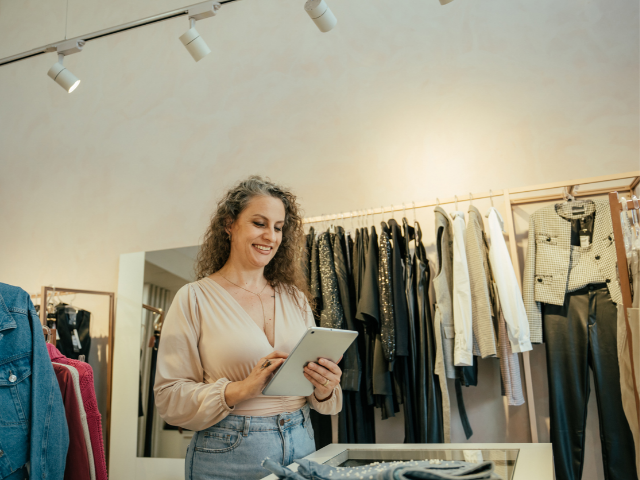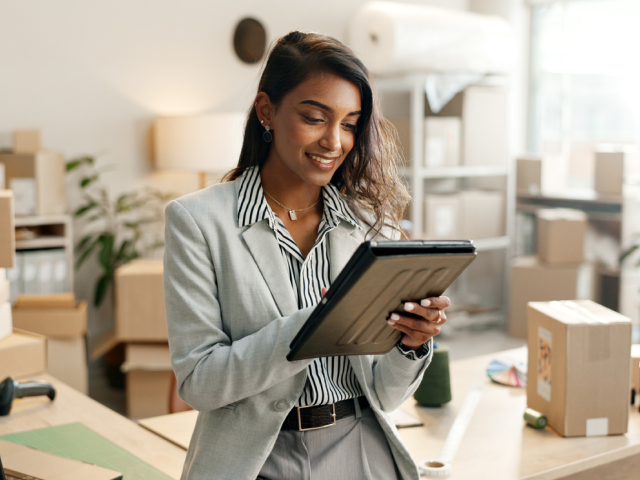Retail is reopening and a semblance of post-pandemic normality is returning to day-to-day life across North America and Europe. Despite this gradual reopening, the transformative changes to consumer behavior undertaken over the course of the pandemic are here to stay, and are set to continue impacting the retail sector over the coming months and years. A critical component of retail set to be reimagined in the post-pandemic era is the design and purpose of stores.
Gone are the days of a ‘one size fits all’ store format defined by a sales floor merchandise around product, a back room for holding excess inventory, and sales associates patiently staffing the floor waiting for customers to enter. New customer behaviors normalized during the pandemic, think curbside pickup, shopping by appointment and virtual associate support, will continue to exist into the post-pandemic retail environment. Retailers know that a return to pre-pandemic business-as-usual operations isn’t viable and that modern technology will play a critical role in this transformative journey.
Central to the shift in post-pandemic retail is a re-examination of the entire customer journey, spanning both online and offline customer touchpoints, and then redefining the role the store plays along that journey. At a more refined level, retailers can take a step back to understand exactly what consumers expect and value along their purchase journey, whether it’s a quick product pickup for an essential item or a consultative styling experience for an apparel purchase. Once this journey is defined, the store’s format and purpose can be redesigned to align with an optimized customer experience journey.
Fulfillment first
On one end of the retail spectrum, in a high volume, low-touch environment such as grocery or essentials, is an opportunity to optimize stores around fulfillment to maximize conversion. In this environment, technology can be harnessed to provide a frictionless checkout and fulfillment process to prioritize speed and volume at the associate level. Tools such as mobile POS can be incorporated to provide a fast and frictionless checkout experience and a robust set of fulfillment options can equip stores to provide delivery fulfillment options tailored to individual consumer preferences.
At the same time, fulfillment can also be adopted by luxury retailers who are focused on delivering a premium customer experience. Offering multiple fulfillment options to customers in order to provide convenience and flexibility is part of the top-tier experience luxury consumers have come to expect as part of the high end shopping experience. Providing customers with a broad range of fulfillment options, from quick and convenient curbside pickup, to an appointment-based fitting sessions, is a clear next step in the transition towards delivering a premium omni-channel experience.
Experiential focus
On the other end of the retail spectrum, such as a premium or luxury environment, customers expect a highly personalized, curated experience. In this case the store becomes a showroom in which to host the client and deliver a premium service experience. Again, technology can be leveraged to provide a uniquely defined experience, one tailored towards increased basket size and retention. From shopping by appointment, to preemptively personalizing the product assortment based on customer preferences, the store becomes an experience delivery platform. Instead of a high volume, SKU heavy sales floor, a virtual endless aisle catalog and digital stock requests become the store associates’ core sales tools.
Store as a studio
Finally, directly resulting from new behaviors developed over the course of the pandemic, is an expectation by customers to shop where and when it’s convenient for them. In this case the store can act as a presentation centre from which associates are equipped to service clients remotely. Instead of physically visiting a store to receive highly personalized service, clients can instead shop remotely alongside an associate through a video chat tool, receive curated product styling recommendations through a personalized digital look book, and complete transactions with a remote pay link. In this case, when customers have the option to shop with an associate where and when it’s convenient to them, retailers can deliver an experience designed around the customer’s expectations.
There has never been more pressure on retailers to do more with less. While consumer behaviours were fundamentally upended during the pandemic, our return to post-pandemic retail will still put stores at the centre of the retail journey. Reimagining store format to deliver an omni-channel customer journey will enable retailers to maximize conversion and retention while delivering an optimized experience.
Subscribe to our blog today to get latest updates.


